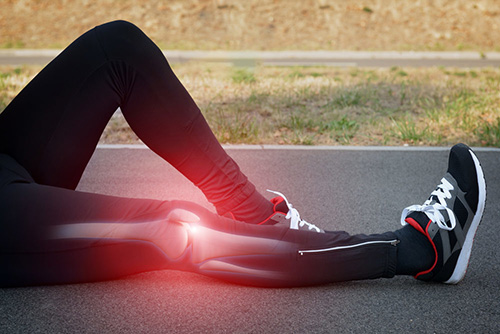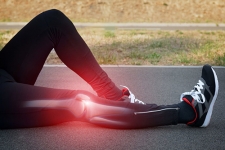Whether you’re an athlete who would like to get back to your sport, a construction worker who would like to get back to work, or someone who would like to just get back on their feet to do normal tasks, Prairie Orthopaedic & Plastic Surgery can help you return to your ideal activity level after an ACL tear. An ACL (anterior cruciate ligament) tear is one of the most common knee injuries. Those who play sports as well as those with old knee injuries and aging joints are at risk for a tear. This blog will discuss the anatomy of an ACL tear as well as its causes, symptoms, and treatment options.

Anatomy of an ACL Tear
There are three bones that meet to create your knee joint: your thighbone (femur), shinbone (tibia), and kneecap (patella). These bones are held together by ligaments that act like a strong rope to hold your knee in place and to keep it stable. These ligaments are known as collateral and cruciate. Collateral ligaments are on the side of the knee and help control the sideways motions. Cruciate ligaments are on the inside of the knee and help control the back and forth motion. The anterior (front) and posterior (back) cruciate ligaments cross each other like an “X”.
Causes of an ACL Tear
There’s no one way to injure an ACL, but a tear is most often triggered by activities that stress the knee. Here are some of the most common causes of an ACL tear:
- Suddenly slowing down
- Rapidly changing directions
- Pivoting with the foot planted
- Landing incorrectly after a jump
- A direct hit or collision to the knee
In addition, there are some factors that increase the risk of getting an ACL tear, such as:
- A highly physical sport (soccer, football, basketball)
- A previous knee injury
- Female sex
- Age (active youth and adults and elderly adults)
Symptoms of an ACL Tear
The moment you injure your ACL, you’ll likely hear a “popping” sound and your knee will give out. The other symptoms are described as:
- Pain
- Swelling
- Loss of range of motion
- Tenderness
- Discomfort and instability while walking
These symptoms can occur immediately, but it may take a day or two to fully appear.
Treatment for an ACL Tear
The treatment of the ACL tear will depend on the severity and needs of the patient. There are both nonsurgical and surgical options.
For example, a patient who is elderly and engages in low-impact activities can avoid surgery. However, a young athlete who wants to return to sports will likely need surgery.
Nonsurgical Treatment
- Bracing
- Physical Therapy
Surgical Treatment
- Rebuilding the ACL
- Physical Therapy
Choose Prairie Ortho
Injuries are unavoidable most of the time, but there are ways to help reduce your chances. To prevent an ACL tear, the best thing to do is to strengthen the muscles around your knees. Routine exercise, proper weightlifting techniques, and adequate rest can help lower your injury risk.
For more treatment or prevention information for ACL tears, please schedule an appointment with Prairie Orthopaedic & Plastic Surgery in Lincoln, NE. Our board-certified orthopaedic surgeons and physical therapists are ready to help get you back on your feet once again.

